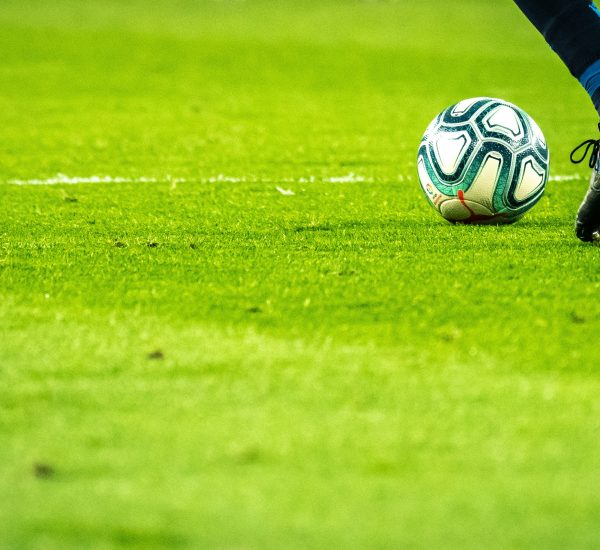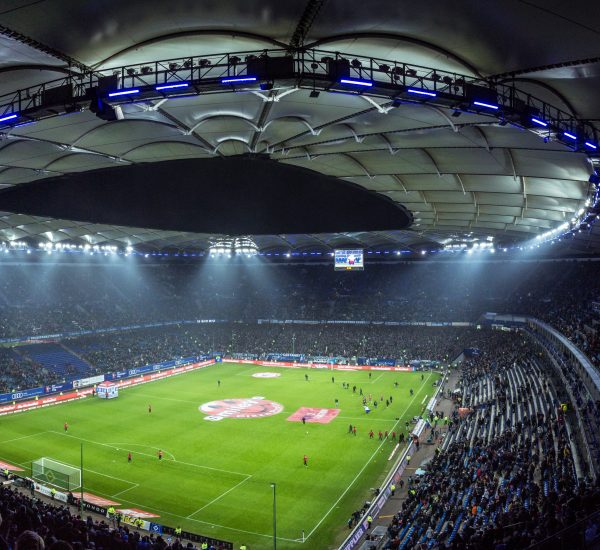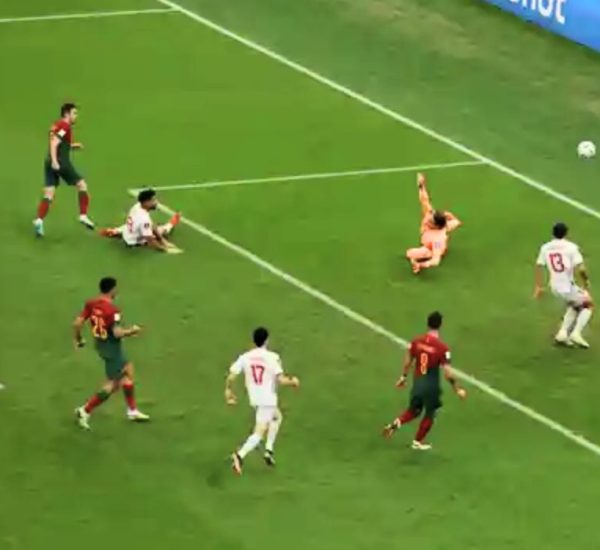When we think of a team tailor-made for European success, Sevilla FC is one of the names that springs to mind. They are a formidable club when it comes to knockout stages. They are a feared opponent in both European and domestic cup competitions.
Sevilla currently plays in La Liga and is the second oldest Spanish soccer club. Their stadium, the Estadio Ramón Sánchez Pizjuán, has a capacity crowd of 42,714 seats. The club has won 1 la Liga title, 5 Copa del Rey, 1 Spanish Super Cup, a record 6 UEFA Europa League, and 1 UEFA Super Cup.
Sevilla FC’s history is one with ups and downs. But during recent years, the club has risen to the top of the soccer world. So let us dive into the formation of this magnificent side.
| Full Name | Sevilla FC |
|---|---|
| Founded | January 25, 1890 |
| Nickname | Los Nervionenses |
| Stadium | Estadio Ramón Sánchez Pizjuán |
| Capacity | 42,714 |
| Owner | Sevillistas de Nervión S. A. Rafael Carrión Moreno |
| Manager | Julen Lopetegui |
| League | La Liga |
Foundation Of Sevilla FC
The practice of soccer had already commenced in Sevilla by the end of the 19th Century. Many Britishers from a manufacturing company in Andalusia used to spend their free time enjoying the sport.
On January 25, 1890, Sevilla FC was born as the Britishers in that locale celebrated Burns Night in Seville. The club’s founding document highlights how these young Britishers used to train under the Association rules.
A Scot, Edward Farquharson Johnstone, became the club’s first president, and Hugh Maccoll became the first captain. The Englishman Isaias White junior became the first secretary of Sevilla. He was also one of the colleagues of Hugh Maccoll before being associated with the club.
To mark the occasion, Isaias White invited Recreativo de Huelva to a friendly match, which they accepted. It was the first-ever soccer match taking place in Seville. Sevilla eventually won by 2-0 in this first-ever competitive soccer game in Spain.
By 1907, Recreativo de Sevilla and Espanol de Sevilla also came into being. More clubs were formed, and this meant more competitive fixtures and practice for the club. However, Sevilla had the upper hand in comparison to other teams based on their experience.
Dominance In The Sanchez Pizjuan Era
Sevilla triumphed in the first ever Copa De Sevilla in 1912. In 1915, a competition called Copa Andalucia was formed. This domestic competition contained teams like Sevilla FC, Real Betis, Recreativo de Huelva, Español de Cádiz and Nacional de Sevilla y Córdoba. This competition went on for the next 17 years.
The competition level in this tournament was highly unbalanced. Out of the 19 competitions, Sevilla won 16.
They won the Copa del Rey (Spanish Cup) for the first time in 1935 after their win over Sabadell. They repeated the feat in 1939 after beating Racing de Ferrol.
After their second cup win in 1939, they missed the chance to clinch the league title on the final day against Atletico Madrid. Sevilla arguably had the finest attacking players at their disposal at that time as they scored 216 goals in 4 seasons.
After their second cup win in 1939, they missed the chance to clinch the league title on the final day against Atletico Madrid. Sevilla arguably had the finest attacking players at their disposal at that time as they scored 216 goals in 4 seasons.
A First League Title Triumph For Sevilla FC
In 1941, Roman Sanchez Pizjuan decided to step down as the club’s President as he joined the Spanish federation. Antonio Sanchez Ramos took over temporarily before Jeronimo Dominguez y Perez de Vargas became the permanent President. His tenure went on for six years until Pizjuan came back to his favorite club.
Sevilla finished second and third in the 1942-43 and 1943-44 seasons, respectively. The 1945-46 season will remain in the history books of Sevilla FC forever. In that season, they secured their first and only league title to date. They finished one point ahead of FC Barcelona to clinch the title.
In 1948, they won the Copa Del Rey again, beating Celta de Vigo 4-1 in the final. Campana became the new manager in 1949. However, after one year, they missed out on the league title by 2 points against Atletico Madrid. After a few mediocre seasons, the gaffer eventually left.
Helenio Herrera took over as the club’s manager during the 1953-54 league campaign. The club finished 5th in his first season. Somehow under his management, Sevilla became a competitive team as they finished 4th in the 1954-55 and 1955-56 seasons.
The Estadio Ramón Sánchez Pizjuán
The new stadium plans were in place because the Nervion stadium was too small for their fanbase. But, unfortunately, they could not bring that positivity to the Copa Del Rey final as they lost to Real Madrid.
In October 1956, President Sanchez Pizjuan passed away. As per the fans’ demand, the club decided to name the stadium after him as they won 3 Copa del Rey finals in his regime.
Sevilla finished as runners-up behind Real Madrid in Helenio Herrera’s fourth season. The second-place finish ensured qualification to their first-ever European Cup.
The 1957-58 season was a turbulent season for Sevilla. The Los Nervionenses barely escaped relegation. In the same season, they reached the quarter-finals of the European Cup before falling again to eventual champions, Real Madrid.
The Roman Sanchez Pizjuan stadium was officially inaugurated in September 1958. In their first official match at their new stadium, Sevilla beat Real Betis 4-2.
Hardship And Restructure
In the 1970s, the club suffered financially. They had to sell their best players to overcome debts incurred during the construction of their new stadium. Atletico Madrid signed Manual Ruiz Sosa back from Sevilla. Gallego went to Barcelona, and Real Madrid completed the deal for Juan Batista Aguero.
As a result of having fringe players within their squad, the club got demoted to the second division for the first time in 3 decades. However, they returned to the first division a year later.
Max Merkel got appointed as Sevilla manager in 1969. He was a popular figure and was known for his aggressive training techniques. In his first season, Sevilla finished third.
However, the club got relegated in the 1972-73 season. Max Merkel left the club. In the 1974-75 season, the club hired Roque Olsen. Under him, the club earned a promotion back to the first division. Sevilla played their 1000th La Liga game in May 1976.
Signature Of Diego Maradona
Sevilla participated in consecutive UEFA Cup tournaments from 1981 to 1983 under Manolo Cardo. However, his inability to go the extra mile with the group of players cost him his job. As a result, he left his role after five years.
Under Vicente Cantatore, the club secured the UEFA Cup qualification in 1990. Toni Polster was fundamental in that campaign as he scored a club-record 33 goals in that season.
To everybody’s happiness, one of the greatest players of all time, Diego Maradona, signed for the club from Napoli in 1992. However, the fans never got to see his vintage game as injuries and feuds with the management allowed Sevilla to release the Argentine. Nevertheless, he scored eight goals for the club.
Failure To Perform At The Highest Level
Under Luis Aragones, Sevilla qualified for the UEFA Cup once again. However, in 1995, the club got relegated in a somewhat controversial fashion for not making their payments to the Royal Spanish Football Federation.
However, the decision got reversed due to the reaction of the protesting fans. It brought extreme volatility within the club. The club saw four presidents and three managers taking over in a season.
In 1997, Sevilla got relegated again. They returned to the first division in 1999. Roberto Ales got appointed as President. The club was in a fragile condition, with numerous players at the end of their playing careers.
As the 21st Century started, Sevilla slowly started building momentum and grew as a club to what we know today.
The Rise Of Sevilla FC Under Juande Ramos
In 2002, Roberto Ales stepped down as Sevilla President, allowing Jose Maria del Nido to take over. He quickly made Caparros as the coach and Monchi as the sporting director. As a result, the club finished in the UEFA Cup spots in both 2004 and 2005.
In 2005, Sevilla FC appointed Juande Ramos as manager. During his first season in charge, the gaffer guided Sevilla to a UEFA Cup triumph. They defeated Middlesbrough by 4-0 in the final. Three months later, Sevilla won their first UEFA Super Cup as they beat Champions League winners FC Barcelona by 3-0.
In 2007, the club won its second consecutive UEFA Cup trophy. They faced Espanyol in the finals, with the match finishing at 2- 2 after extra time. However, they went on to win the penalty shootout by 3-1.
Sevilla also won the Copa Del Rey in 2007 after beating Getafe 1-0. They continued to be a dark horse competing with the big Spanish clubs as they beat Real Madrid in the Spanish Super Cup during the same year.
End Of Juande Ramos Era
The Los Nervionenses could not defend their UEFA Super Cup title, losing 3-1 to AC Milan. Juande Ramos left the club to join Tottenham Hotspur in 2007. Manolo Jiminez got hired as his replacement.
Despite finishing top of the Champions League group, Sevilla crashed out to Fenerbahce in the Round of 16. Sevilla won a record-equalling 21 matches in the 2008-09 campaign, finishing third in the title race.
They won their fifth Copa del Rey trophy in 2010 by overcoming Atletico Madrid in the finals. However, the club could not secure a second Spanish Super Cup in 2010 as Barcelona became the eventual winner. The Catalans won the match by 5-3 over two legs.
European Success Under Unai Emery
The 2012-13 season did not go as per the expectations for Sevilla. Michel got sacked as Sevilla’s manager after the 2-0 loss against Valencia in January 2013. He got replaced by the former Valencia manager Unai Emery.
As the club was already going through a financial crisis, they had to sell their best players once again. However, that did not affect their European form as Emery’s Sevilla beat Benfica on penalties to win their third Europa League title.
Due to their European success, the club hierarchy changed the team’s spine as per Emery’s demands. Despite crashing out of the Champions League, they defended their Europa League crown the following year by beating Dnipro Dnipropetrovsk 3-2 in the final. It was their 4th Europa League title.
It eventually became five as they won their 3rd consecutive Europa League title on the spin in 2016 by beating Jurgen Klopp’s Liverpool 3-1. It was Emery’s final game as Sevilla manager as he left for French club Paris Saint Germain. He got replaced by Jorge Sampaoli.
Finding Emery’s Perfect Replacement
Sampaoli could only last one season as he could not do anything meaningful in Europe or domestically. So he was replaced by Eduardo Berizzo. The gaffer could only last five months as Sevilla was in the bottom 10 of the La Liga table.
Vincenzo Montella became the third manager after Emery had left the club. The results picked up. In one of the biggest shocks in the 2017-18 Champions League campaign, Sevilla knocked out Jose Mourinho’s Manchester United by winning 2-1 at Old Trafford. After that, however, they lost to Bayern Munich.
Julen Lopetegui And The Future
In 2019, Sevilla announced the appointment of Julen Lopetegui as the manager. As his reputation had taken a hit after a failed stint in Madrid, Lopetegui was desperate to prove his doubters wrong. Under Lopetegui, Sevilla became a great defensive unit. It eventually resulted in their 6th Europa League title.
Lopetegui’s men beat Ole Gunnar Soljskaer’s Manchester United 2-1 in the semi-finals and Antonio Conte’s Inter Milan 3-2 in the final. Lopetegui was nominated for the World Coach of the Year, alongside Hansi Flick and Jurgen Klopp. Sevilla lost the UEFA Super Cup final narrowly to Bayern Munich.
There is optimism that Lopetegui can bring domestic success to the club. Currently, the club has a decent mix of young and experienced players and would be looking for a second league title in the coming years.



